[ENG] An architectural palace that houses the history of water in Buenos Aires [ESP] Un palacio arquitectónico que alberga la historia del agua de Buenos Aires
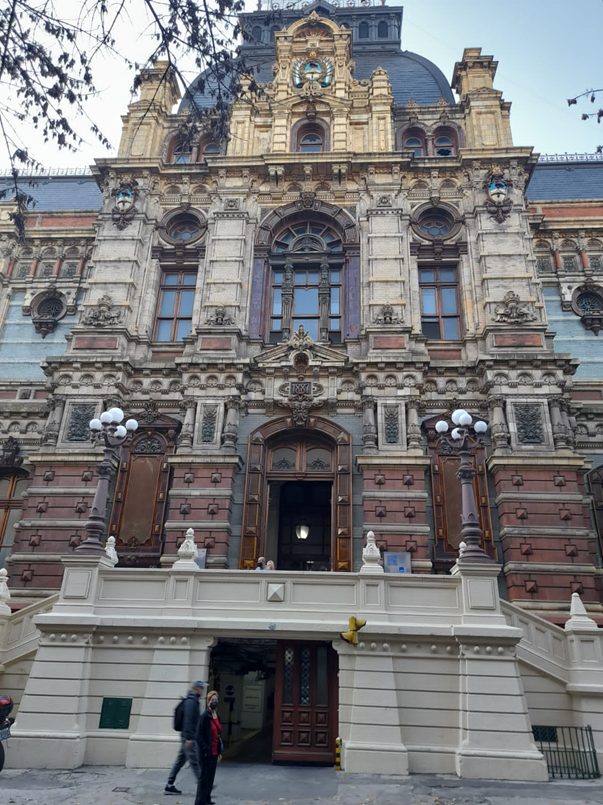
Dear readers of the communities that honor me with your attention. Today I am presenting you an emblematic building in the city of Buenos Aires, which was visited by my sister Myrna and her son Edgar on a recent trip she made to be with her son, grandson and daughter-in-law in, perhaps, the most European city from South America. The photos are wholly owned by the family and may be used for educational purposes without permission, with the exception of the building plans and library, which are not of our property.
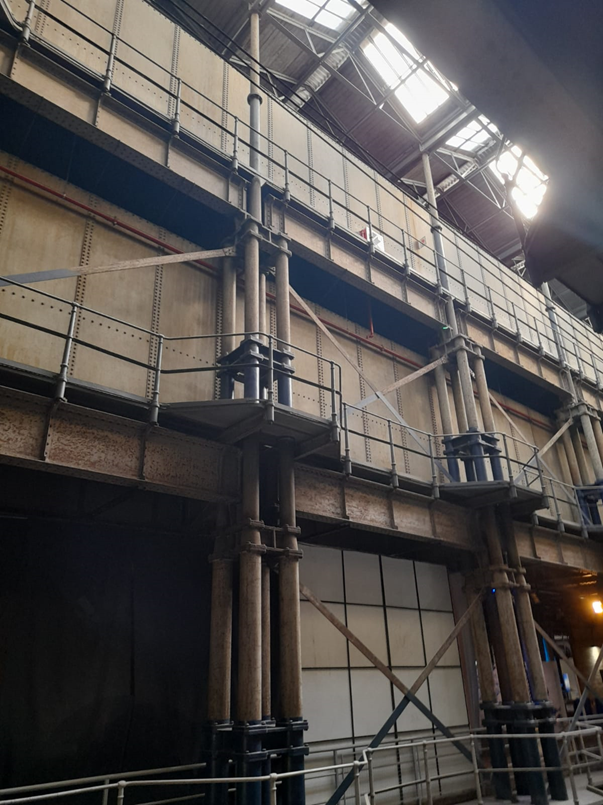
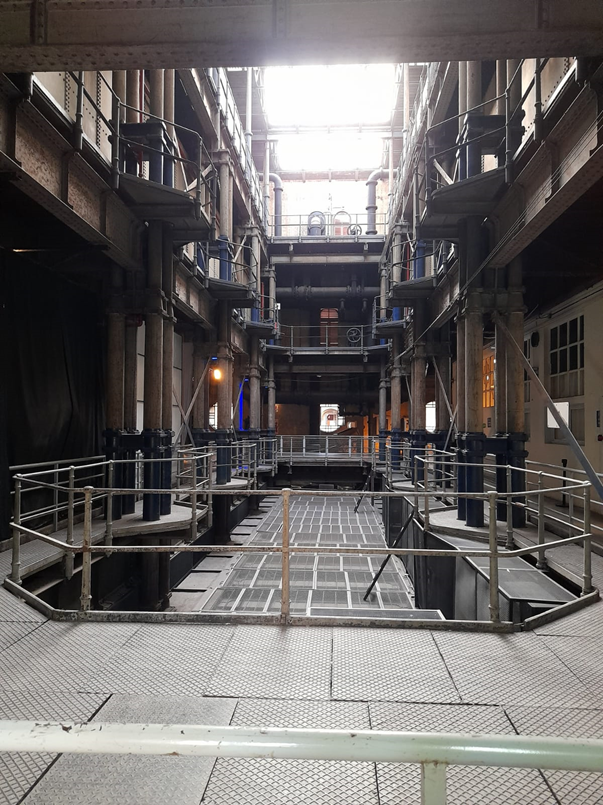
The Palacio del Agua y de la Historia Sanitaria, or Palacio de Aguas Corrientes, whose official name is "Grand Reservoir Engineer Guillermo Villanueva", was built in the style of historicist eclecticism, with neo-Gothic influences, warheads and crenellated walls.
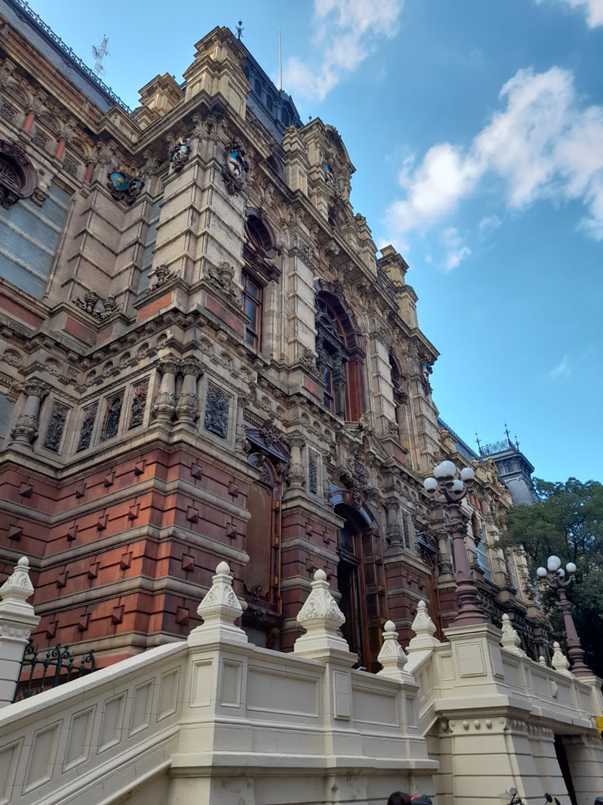
The purpose of the building was to house the supply tanks for running water in Buenos Aires at the end of the 19th century. It was inaugurated in 1894, after 7 years of intense work and is located between three well-known and busy road arteries: Córdoba Avenue, Riobamba streets. and Ayacucho.
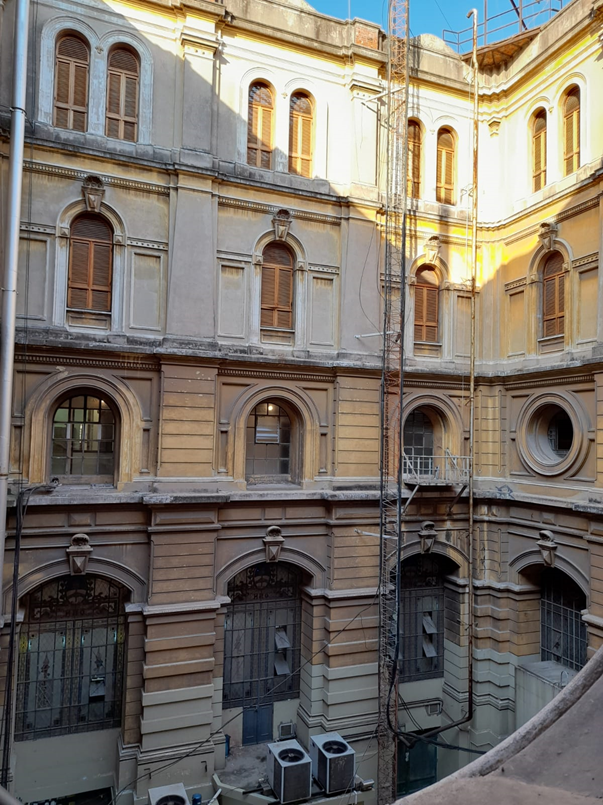
The general project of the work was carried out in the study of English engineer John F. Bareman and its design is the work of the Norwegian architect Olaf Boye, who lived at the time (1885) in the city of Buenos Aires and worked with the elite architects of the country. The supervision of the project fell into the hands of the Swedish engineer Carlos Nyströmer. The building was built primarily with imported materials.
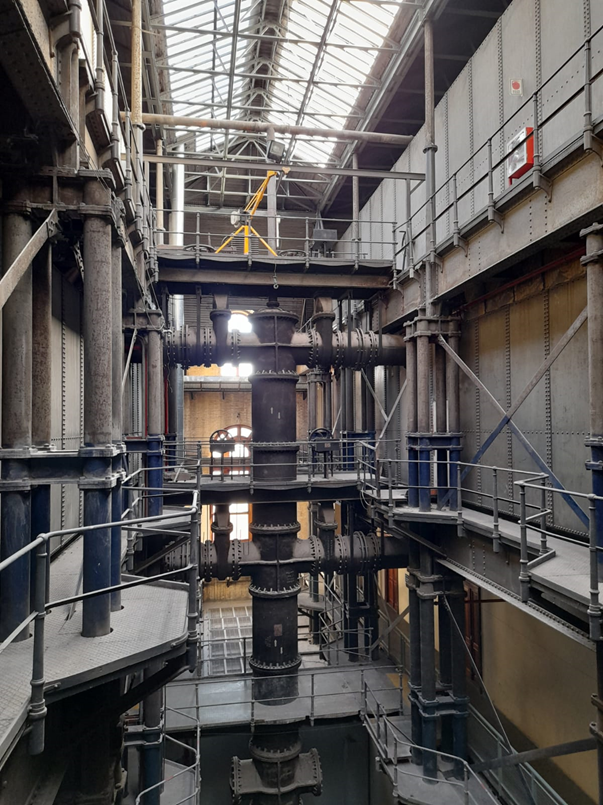
The building has a square plan of more or less 90 meters per side and a maximum height of 20 meters, with balconies in the central part of the façade; It is surrounded by small enclosed gardens with a cast iron fence, supported by masonry pillars. Its visual appeal is produced by the contrasts between brightly colored pieces and others in pale tones.
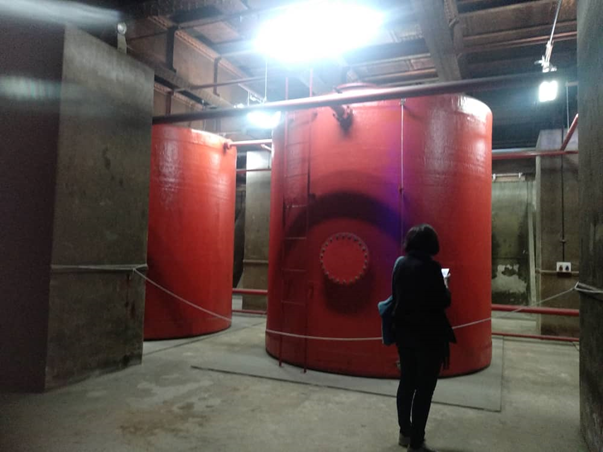
In 1974, the building was subjected to a comprehensive reform, leaving only the façade of Av. Córdoba and some sectors of the fronts facing Riobamba and Ayacucho streets in their original state.

The building has two well-differentiated sectors, both from an architectural point of view and because of the aesthetic criteria used. The exterior, made on purpose as a structure to hide its content, which was considered lacking in all beauty, is covered with terracotta, upholstered with 130,000 enameled bricks and 170,000 ceramic pieces that were specially manufactured in Belgium and England, throughout that it is necessary to add diverse ornaments such as lights and shields of the 14 provinces of Buenos Aires, as well as that of the Nation and that of the Federal Capital. Its windows are made of cedar and the ceilings, made in France, are made of black slate.

On the other hand, the interior of the building is an imposing iron mega-structure weighing approximately 16,800 tons, manufactured in Belgium, with walls up to 1.8 meters thick on the ground floor, with a mesh of 180 cast-iron columns that support all the weight. Its walls are covered with striking ceramics commissioned from the outside, whose pieces were numbered in order to facilitate their assembly.

The building consists of three floors, which support the 12 water tanks, four for each level, with a storage capacity of 72 million liters of water, these tanks are made up of 10 mm soft iron sheets, joined with angle profiles, secured with rivets.

On the ground floor there is a space where, since 1919, there has been a sober library, with oak furniture and very well-lit through large windows, with more than 15,000 books and specialized magazines and a pioneer in Latin America in matters of sanitary engineering and others related to public health and the environment, which was only for restricted use until 2006 when it opened its doors to the community.
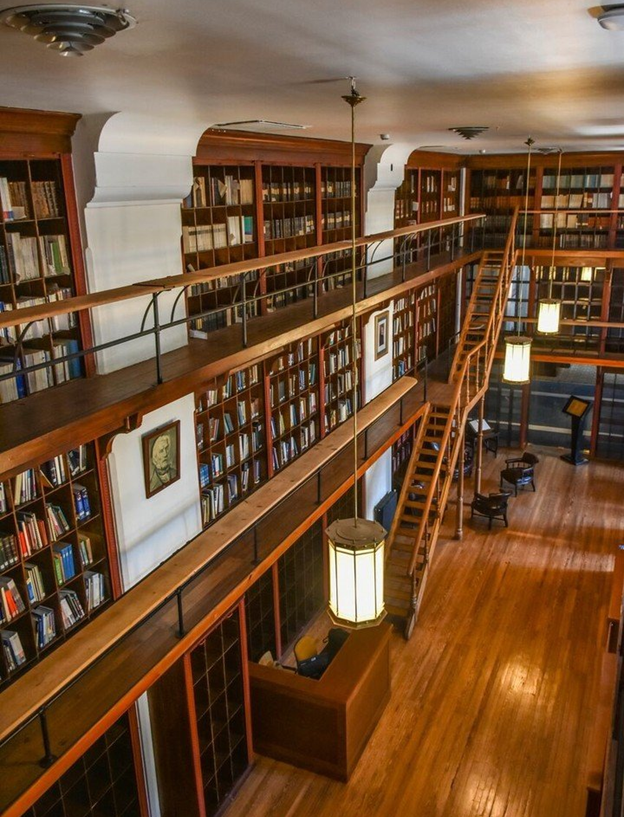
Since 1978, the drinking water service was no longer provided in these facilities; Currently, inside this building is the headquarters of a water company and in the upper part is located the Museum of Water and Sanitary History, where you can learn about the hydrological history of the city and, no less interesting, details of some of the pieces that make up the exterior of this magnificent structure; as well as appreciate various artifacts and objects related to the consumption of water in houses such as pipes, meters, faucets, taps, etc. The Water Palace was declared a National Historical Monument in 1989.
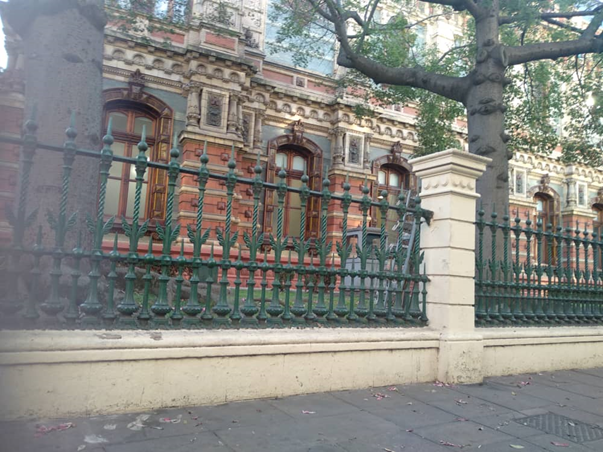
Biography consulted:
•https://www.buenosaires123.com.ar/paseos/palacio-de-aguas-corrientes.ph
•https://www.aysa.com.ar/lobuenodelagua/palacio
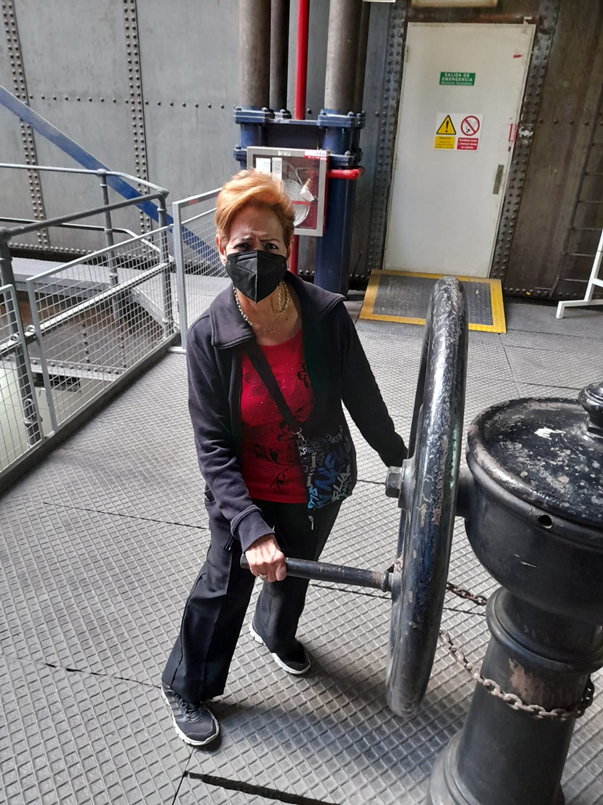
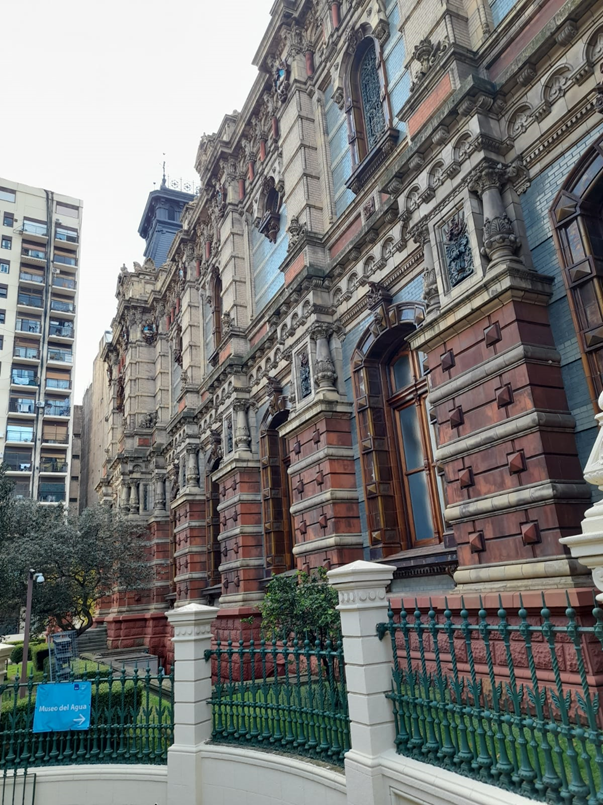
Estimados lectores de las comunidades que me honran con su atención. Hoy les estoy presentando un edificio emblemático de la ciudad de Buenos Aires, el cual fue visitado por mi hermana Myrna y su hijo Edgar en un reciente viaje realizado por ella para estar con su hijo, nieto y nuera en, quizá, la ciudad mas europea de Sudamérica. Las fotos son propiedad familiar en su totalidad y pueden ser utilizadas con fines didácticos sin permiso alguno, con excepción de los planos y la biblioteca del edificio.
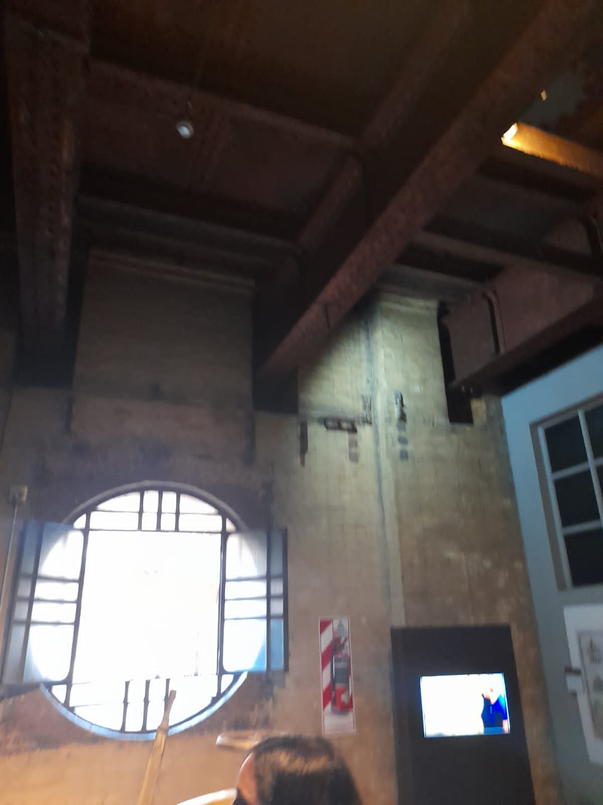
El Palacio del Agua y de la Historia Sanitaria, o Palacio de Aguas Corrientes, cuyo nombre oficial es “Gran depósito ingeniero Guillermo Villanueva”, fue construido, al estilo del eclecticismo historicista, con influencias neogóticas, ojivas y muros almenados.
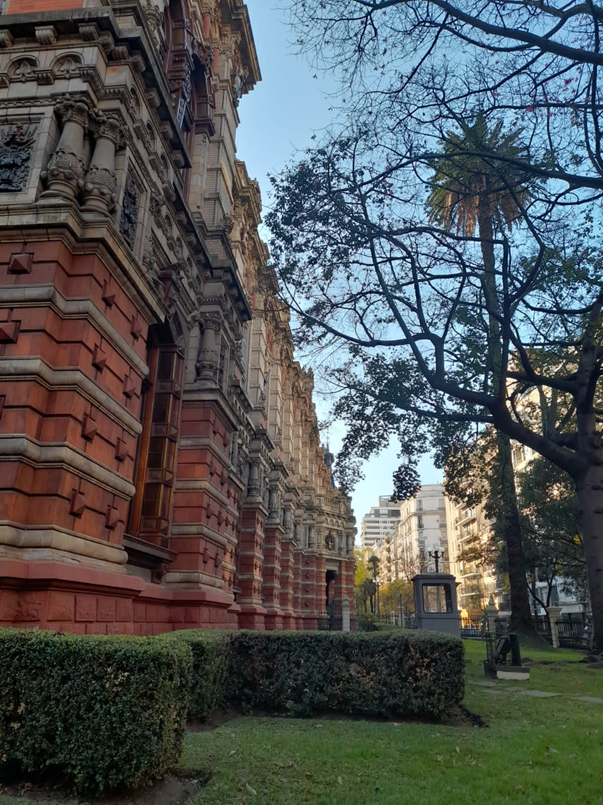
El propósito de la edificación era alojar los tanques de suministro de agua corriente de Buenos Aires a fines del siglo XIX. Fue inaugurado en 1894, luego de 7 años de intenso trabajo y se encuentra ubicado entre tres arterias viales muy conocidas y transitadas: la Avenida Córdoba, las calles Riobamba. Y Ayacucho

El proyecto general de la obra fue realizado en el estudio de ingeniero inglés John F. Bareman y su diseño es obra del arquitecto noruego Olaf Boye, quien vivía para la época (1885) en la ciudad bonaerense y trabajaba con los arquitectos élites del país. La supervisión del proyecto cayó en manos del ingeniero sueco Carlos Nyströmer. La edificación fue construida fundamentalmente con materiales importados.

El edificio tiene una planta cuadrada de mas o menos 90 metros por lado y una altura máxima de 20 metros, con balcones en la parte central de la fachada; se encuentra rodeada de pequeños jardines cerrados con una verja de hierro fundido, apoyada sobre pilares de mampostería. Su atractivo visual lo producen los contrastes entre piezas de colores vivos y otras de tonos pálidos.
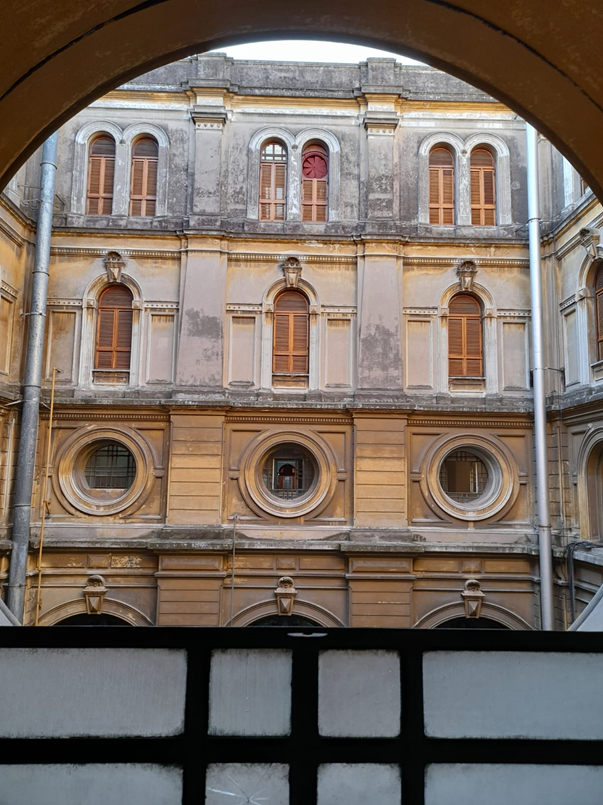
En 1974, el edificio fue sometido a una reforma integral, quedando, en estado original solo la fachada de la Av. Córdoba y algunos sectores de los frentes que dan hacia las calles Riobamba y Ayacucho.
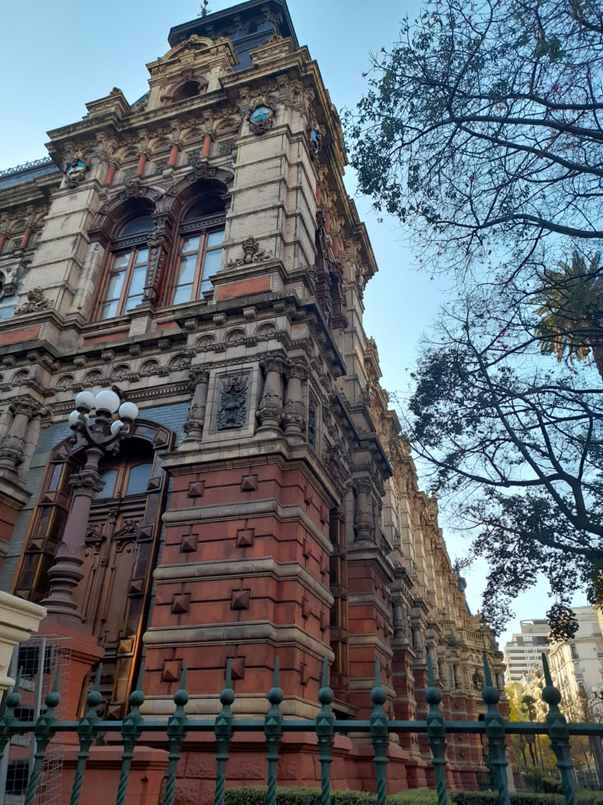
El edificio tiene dos sectores bien diferenciados, tanto desde el punto de vista arquitectónico como por los criterios estéticos utilizados. El exterior, echo a propósito como una estructura que ocultara su contenido, el cual era considerado carentes de toda belleza, está cubierto con terracota, tapizado con 130 mil ladrillos esmaltados y 170 mil piezas cerámicas que fueron fabricadas especialmente en Bélgica e Inglaterra, a lo que hay que agregar diversos ornamentos tales como luces y escudos de las 14 provincias de Buenos Aires, así como el de la Nación y el de la Capital Federal. Sus ventanales son de cedro y los techos, fabricados en Francia, son de pizarra negra.
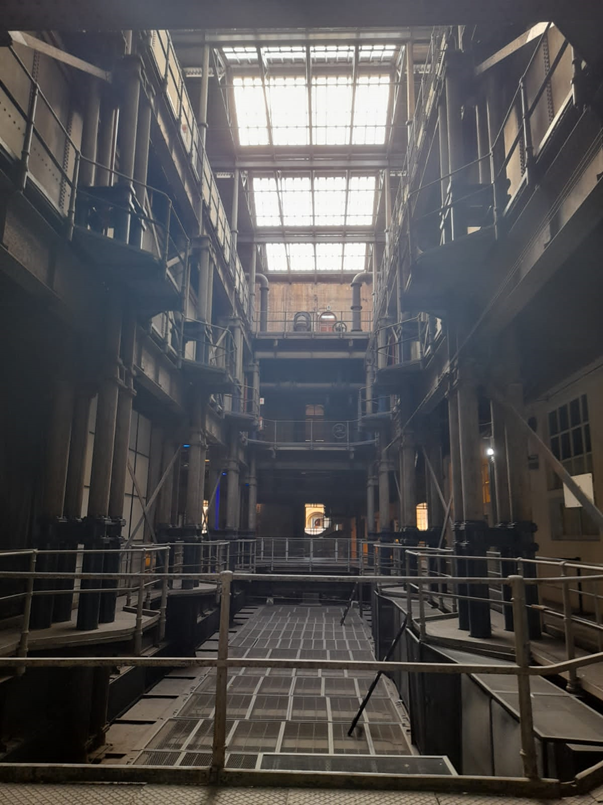
Por otra parte, el interior de la edificación es una imponente mega estructura de hierro de aproximadamente 16.800 toneladas, fabricada en Bélgica, con paredes que alcanzan hasta 1,8 metros de espesor en planta baja, con una malla de 180 columnas de fundición que soportan todo el peso. Sus paredes están cubiertas con una llamativa cerámica encargada en el exterior, cuyas piezas estaban enumeradas a fin de facilitar su montaje.

La edificación consta de tres pisos, que sirven de sostén a los 12 tanques de agua, cuatro por cada nivel, con una capacidad de almacenamiento de 72 millones de litros de agua, estos tanques están formados por chapas de hierro dulce de 10 mm, unidos con perfiles ángulos, asegurados con remaches.
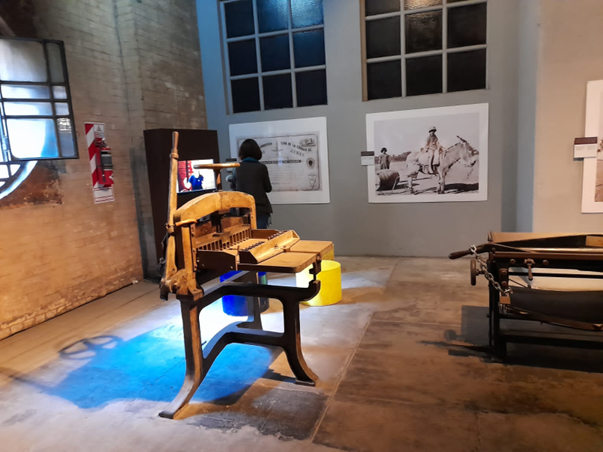
En la planta baja hay un espacio donde funciona, desde 1919, una biblioteca sobria, con muebles de roble y muy bien iluminada a través de amplios ventanales, de más de 15000 libros y revistas especializadas y pionera en América Latina en temas de ingeniería sanitaria y otros relacionados con la salud pública y el medio ambiente, la cual se encontraba sólo para uso restringido hasta que en 2006 abrió sus puertas a la comunidad.
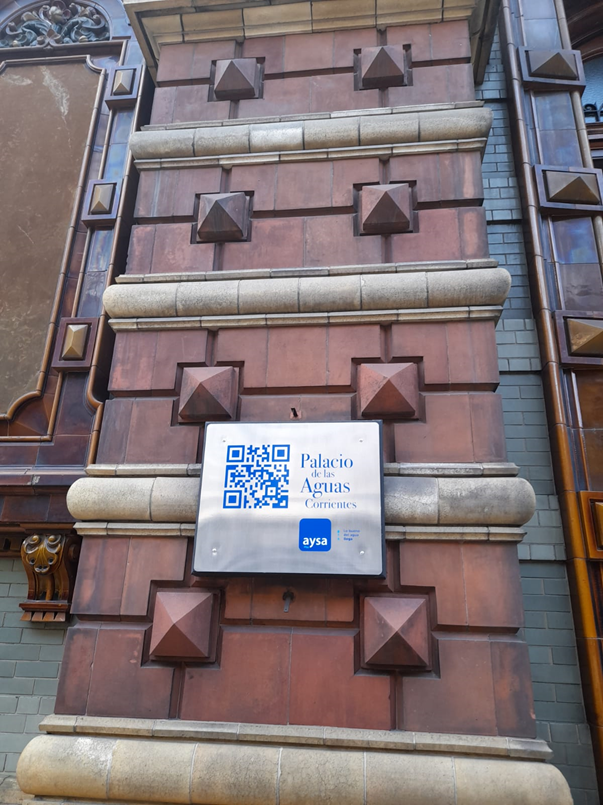
Desde 1978 se dejó de prestar el servicio de agua potable en estas instalaciones; en la actualidad, dentro de este edificio se encuentra la sede de una compañía de aguas y en la parte superior está ubicado el Museo del Agua y la Historia Sanitaria, donde se puede conocer la historia hidrológica de la ciudad y, no menos interesante, detalles de algunas de las piezas que componen el exterior de esta magnífica estructura; así como también apreciar diversos artefactos y objetos relacionados con el consumo del agua en las casas como cañerías, medidores, canillas, grifos, etc. El Palacio del Agua fue declarado en 1989 Monumento Histórico Nacional.
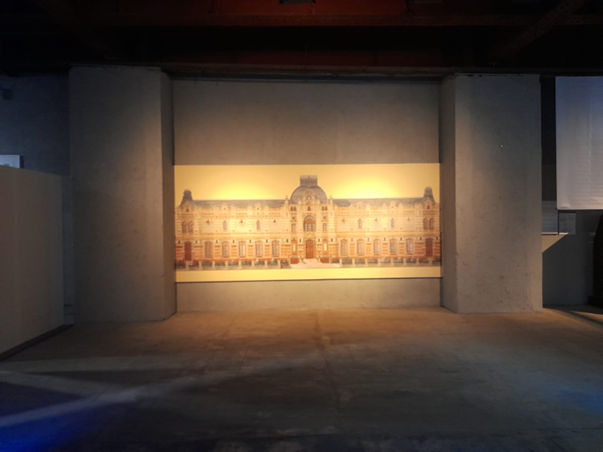
Biografía consultada:
•https://www.buenosaires123.com.ar/paseos/palacio-de-aguas-corrientes.ph
•https://www.aysa.com.ar/lobuenodelagua/palacio
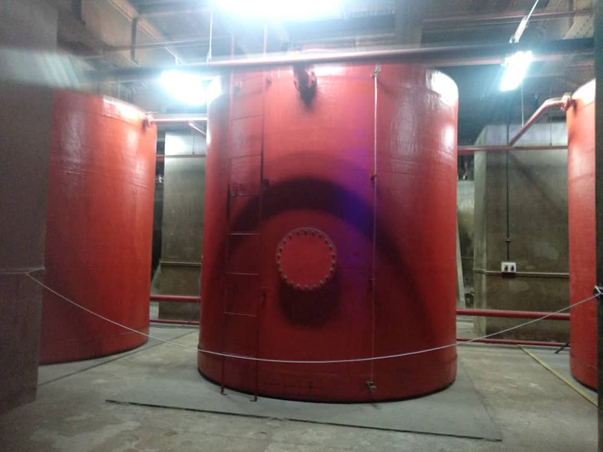
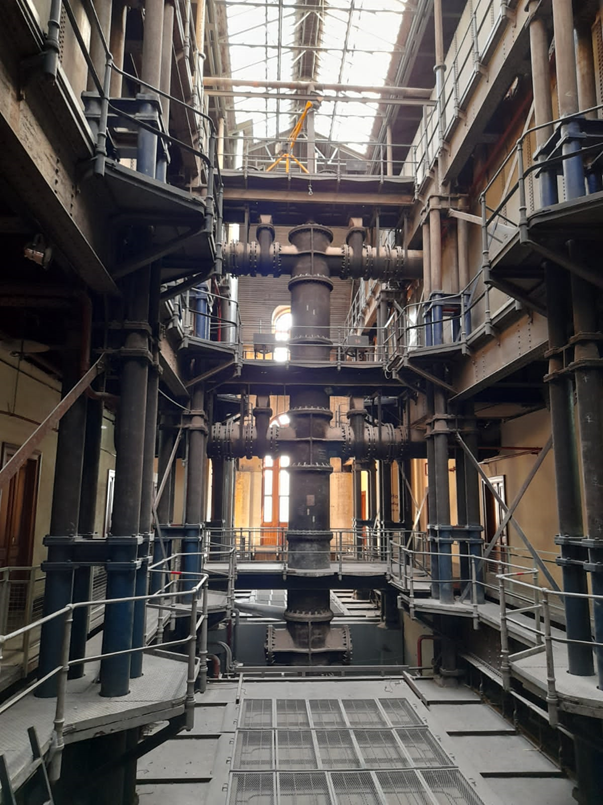
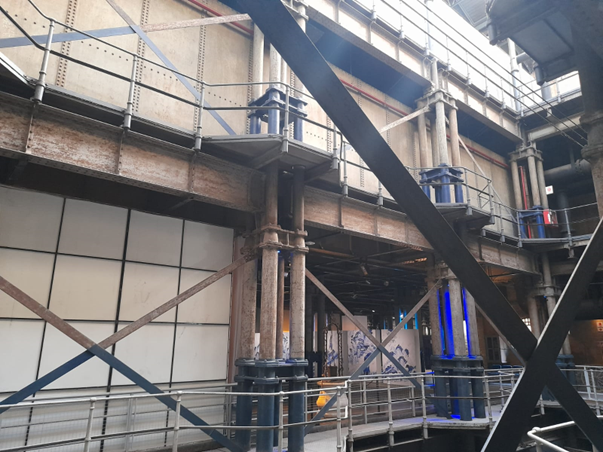
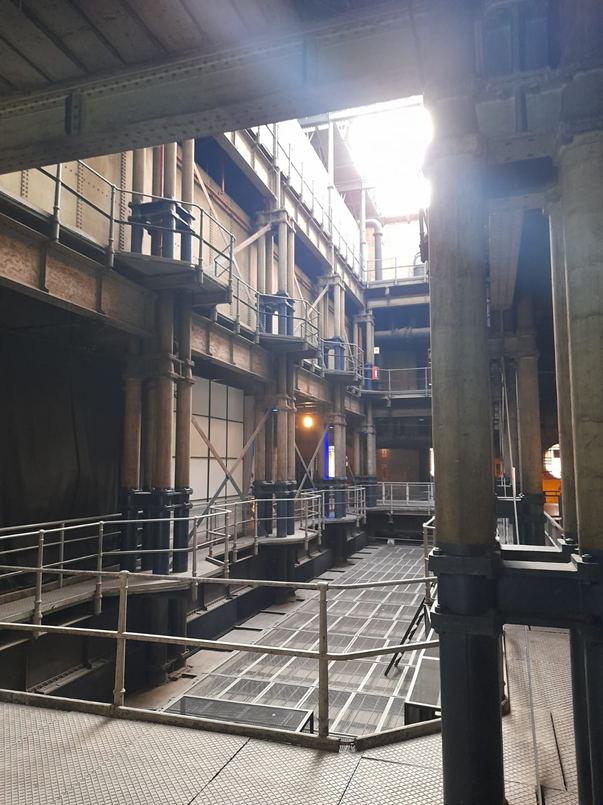
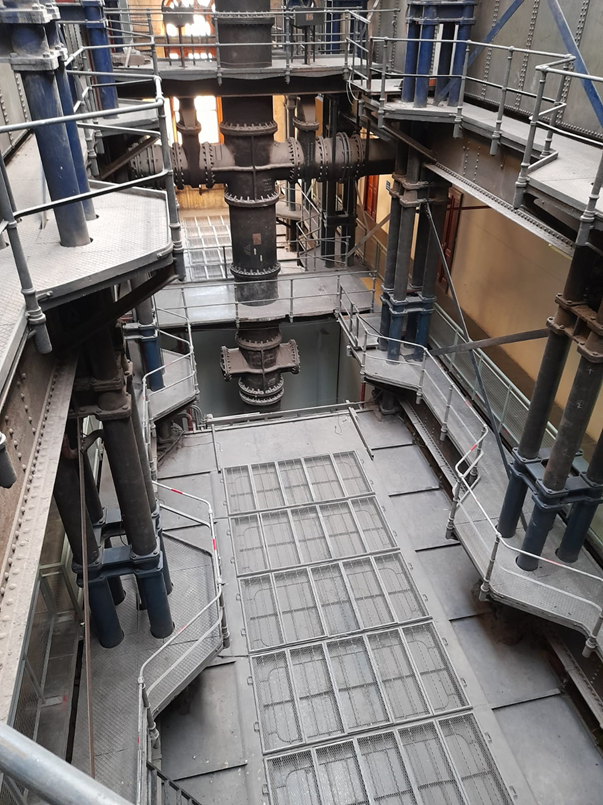
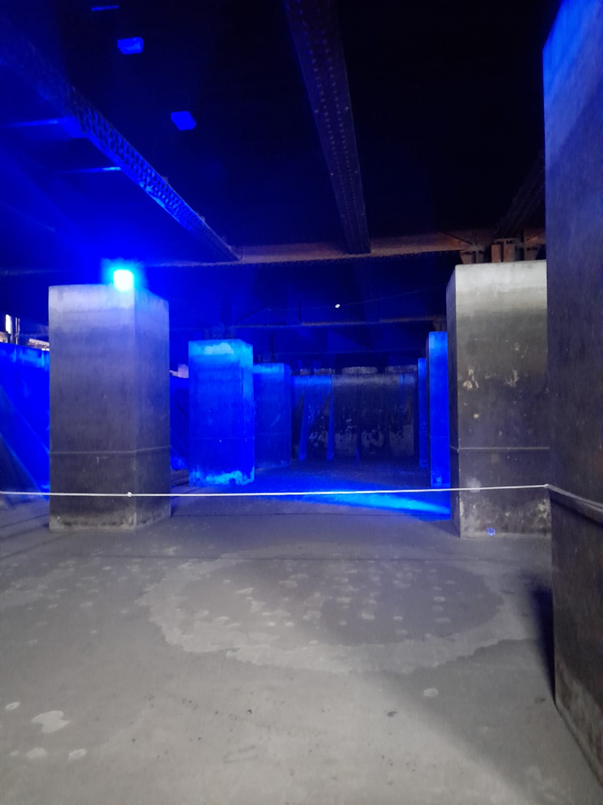

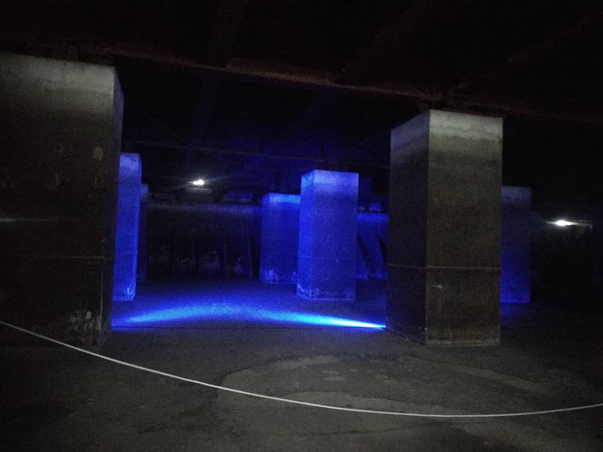
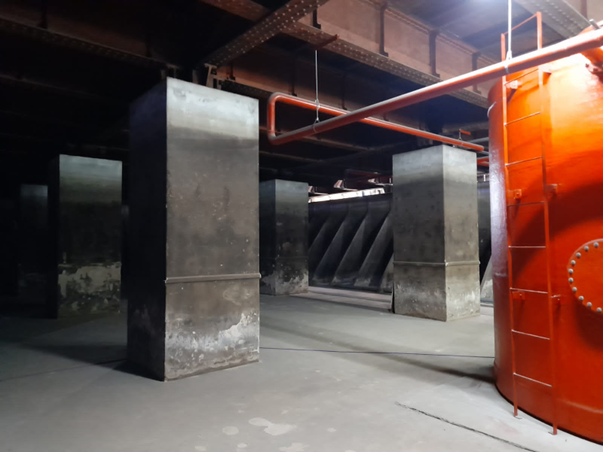
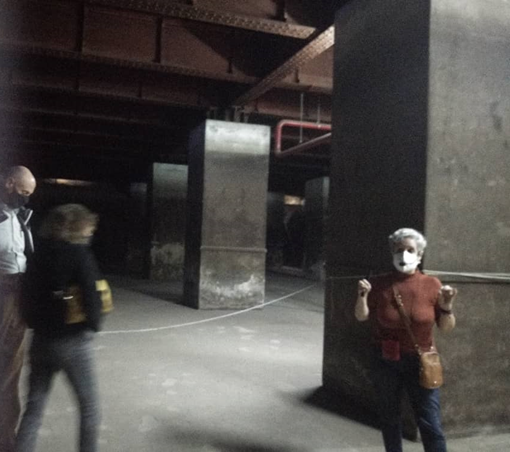
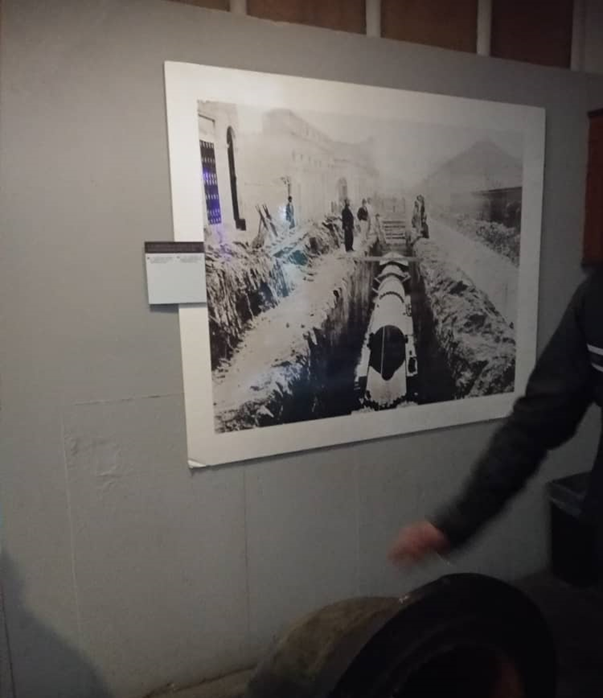
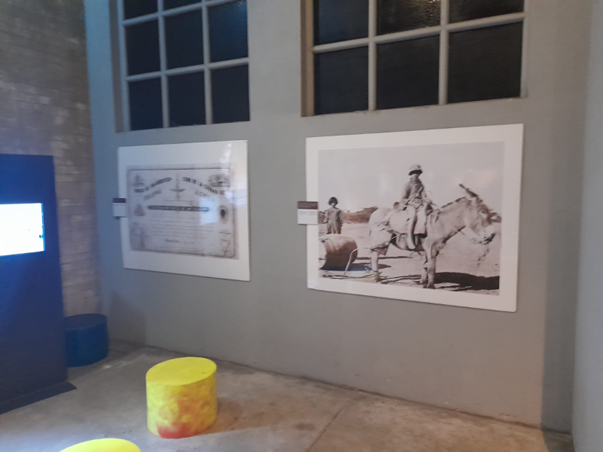
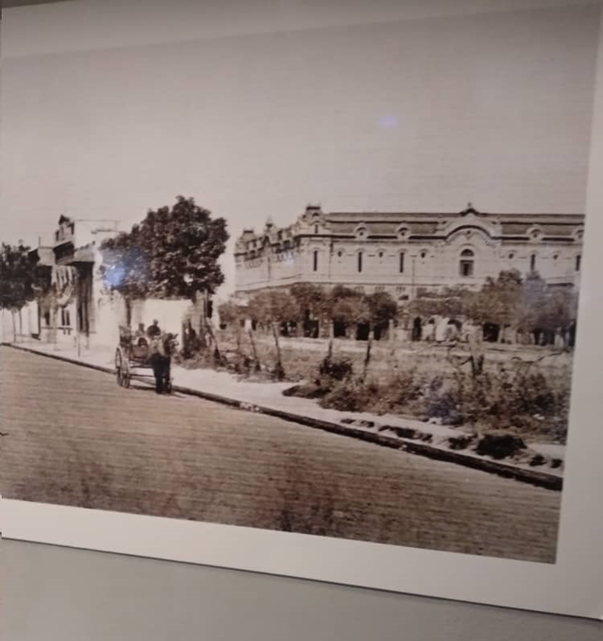

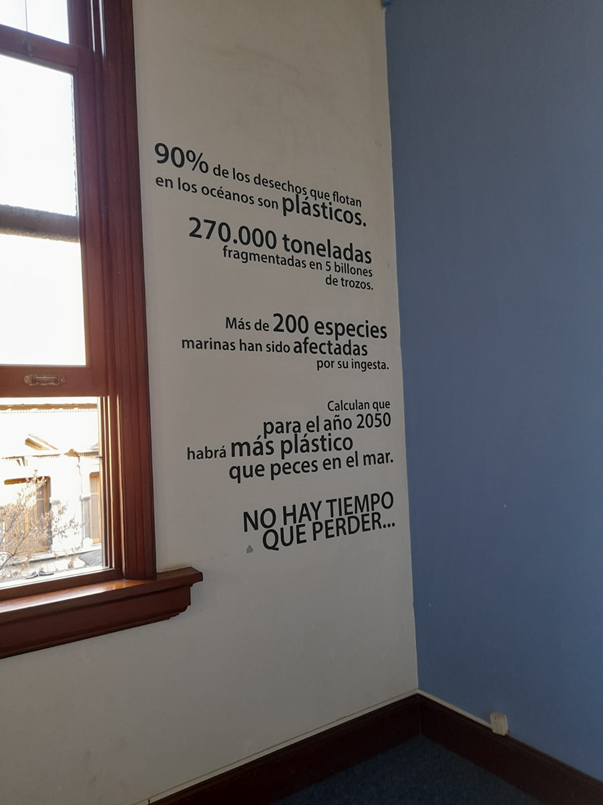
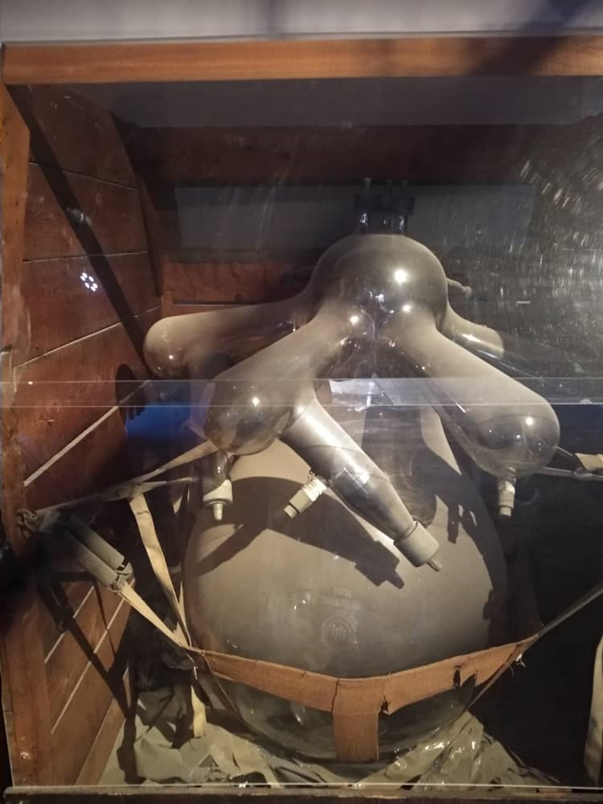
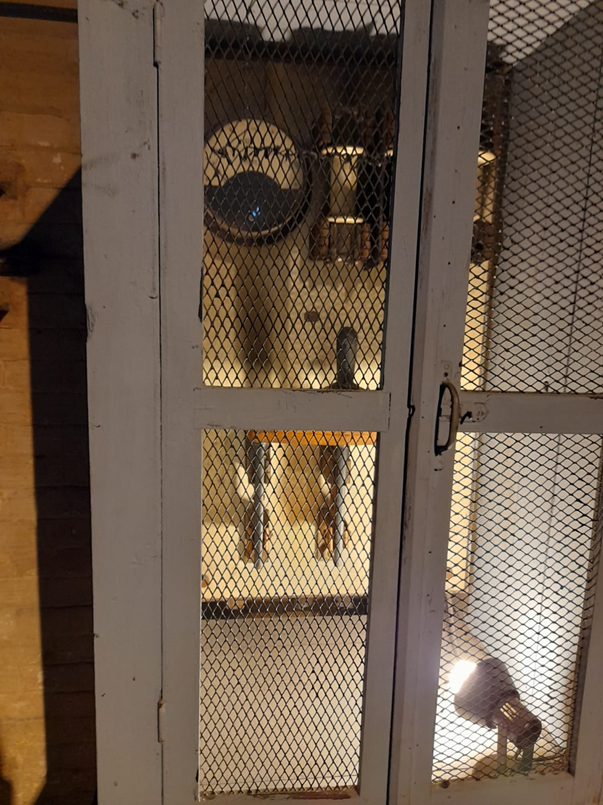
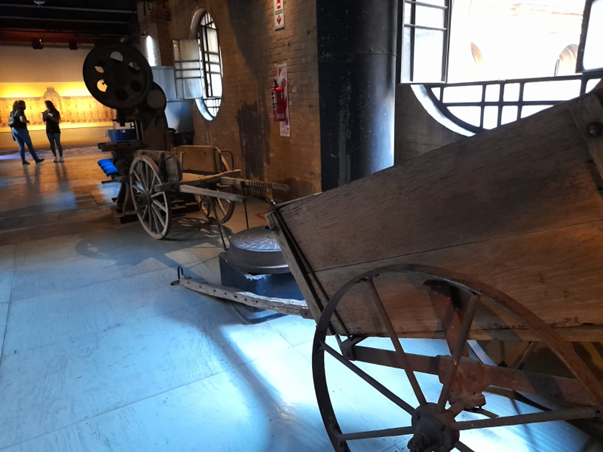
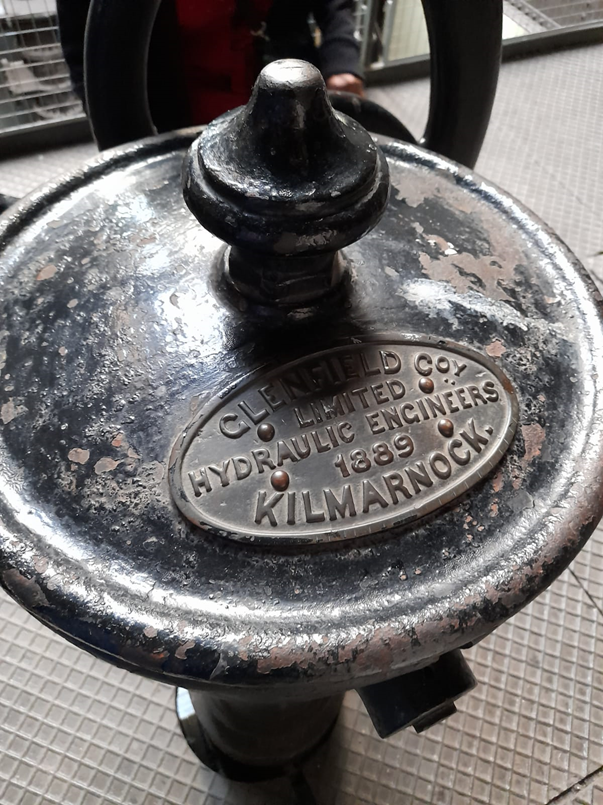

Congratulations, your post has been added to Pinmapple! 🎉🥳🍍
Did you know you have your own profile map?
And every post has their own map too!
Want to have your post on the map too?
Hello friends of Pinmapple, thank you very much for placing my post on your platform. Happy weekend to all
No hay duda de que buenos aires es la ciudad mas europea de américa del sur , el edificio esta muy hermoso y las fotos fueron tomadas con mucho cuidado y mucho cariño , de verdad se sintió como una visita guiada , feliz día
Good morning Rosz. indeed Buenos Aires is perhaps the most European South American city, possibly with Montevideo hot on its heels. I appreciate your words for my post and I wish you a happy weekend.
Buenos días Rosz. en efecto Buenos Aires es quizas la ciudad Sudamericana más europea, posiblemente con Montevideo pisándole los talones. Te agradezco tus palabras para con mi post y te deseo un feliz fin de semana.
Dear @rosz. Kindly add/provide the English language translations to your comments/replies for the reading convenience of our international Hive audience. Thank you for your consideration.
Thank you for sharing this amazing post on HIVE!
Your content got selected by our fellow curator @priyanarc & you just received a little thank you via an upvote from our non-profit curation initiative!
You will be featured in one of our recurring curation compilations and on our pinterest boards! Both are aiming to offer you a stage to widen your audience within and outside of the DIY scene of hive.
Join the official DIYHub community on HIVE and show us more of your amazing work and feel free to connect with us and other DIYers via our discord server: https://discord.gg/mY5uCfQ !
If you want to support our goal to motivate other DIY/art/music/homesteading/... creators just delegate to us and earn 100% of your curation rewards!
Stay creative & hive on!
Hello DIYHUB, I thank you for supporting my post. I wish you a happy weekend.
@tipu curate
Upvoted 👌 (Mana: 32/42) Liquid rewards.
Hello Tipu, thank you very much for your vote. I hope you have a happy weekend
Hello Claudio, good morning from Caracas. Thank you for your support, have a nice weekend
What an amazing buiding Mr @besamu 🤗
Even though it is used as a tank for supplying water, this building looks very different from the outside and with a cool design, i thought this building was a luxury house or a museum as seen from the exterior of the building, but when i saw the interior i understood, Thank you for sharing this impressive content 🤗
Hello Citaamanda, in fact the place was a reservoir of running water that supplied the city of Buenos Aires, but for years it has been a museum, due to the beauty of its exterior and the historical richness of its interior, not to mention the achievements engineers who made at the time. A pleasure to share the post with you. Happy weekend
At first glance I thought it was a municipal hall, it is so amazing, I think everyone will not assume that this building is housing a water system.
Hi Afterglow, I think it's almost impossible, unless you already know the place, assume that this lush building was a water reservoir. Time took care to convert it in a museum that narrates the history of water and also hopes to create awareness of the need to conserve clean water on the planet. A fraternal greeting and happy weekend
I really enjoy your review mate, it looks really amazing architect and design, in my area there is not a single building that has a unique and great shape and design like that
Good afternoon Lion-bull. Thank you for your comment. I believe that the Water Palace is a unique building in the world, at least with the same functions that it originally had. I hope you have a good weekend.
Hello respected and admired friend, colleague and neighbor @besamu I greet you with respect and affection. Thank you for showing us this iconic building, Museo del Agua or El Palacio del Agua, declared a National Historic Monument in 1989. Receive a strong and warm spiritual hug full of blessings, positive energy and lots of light.
Hello dear friend, thank you very much for your words towards me, full of the religious spirit that characterizes you. Your reading, otherwise diligent, managed to get an error that I missed, but that has no forgiveness from God. Receive, together with your family, a fraternal hug.
Hola estimado amigo, muchas gracias por sus palabras para con mi persona, llenas del espíritu religioso que lo caracterizan. Su lectura, por demás acuciosa, logró conseguir un error que se me pasó por alto, pero que no tiene perdón de Dios. Reciba, en unión de los suyos, un fraternal abrazo.
Hello dear friend Benjamin @besamu. What an interesting edifice with a special twist! As most of us know, utility buildings are not typically designed lavishly due to their basic utilitarian nature, namely servicing a local community with natural gas, electricity or in this case, water.
However, that architectural palace housing water service tanks, pipes, and related infrastructure, is truly extraordinary. Because the original Architects could have just simply constructed that project in its bare minimum, yet they pushed the extra mile by creating an artistic masterpiece. Definitely a historic marvel of architecture that Argentina should be proud of! 😊
Hello dear friend Erne, I missed your always correct comments. I had not seen any building that housed the provision of a public service as beautiful as the Palacio de las Aguas in Buenos Aires. I agree with you about your assessment of it and its qualification of "artistic masterpiece". Receive a fraternal greeting.
Very beautiful building with that neo-gothic facade and that elegant French style. Great detail to make such a beautiful facade to cover such a utilitarian interior. A first class job with the highest technology and workmanship (architects/engineers involved). Hence such a beautiful result. Great post with lots of amazing pictures.
Hello Francisaponte, I appreciate your comments. Your laudatory words encourage me to continue giving you posts that call the attention of the architectural structures to which I have some type of access, outside the internet. Receive a fraternal greeting.
Greetings friend @besamu what an amazing work of architecture and engineering, to house water and what comes to mind is to say that water deserves it. It is our vital liquid and in all countries should be given a luxury treatment, thanks friend for showing this marvel of building. Have a happy week.
Hello Sorprendente friend, we share the same criteria that the water "deserves" that aesthetic-architectural treatment. Thank you for your comment and receive my wishes for a happy week.
Congratulations @besamu! We're delighted to specially curate your awesome publication and award it RUNNER-UP in Architecture Brew #71. More power!
Thank you for subscribing to Architecture+Design, an OCD incubated community on the Hive Blockchain.
Hello friends of Aplusd, thanks for the congratulations and for having placed my post as Runner-up in Architecture Brew #71. happy and profitable week
With utmost pleasure dear @besamu. Keep up the fantastic posts! 😀